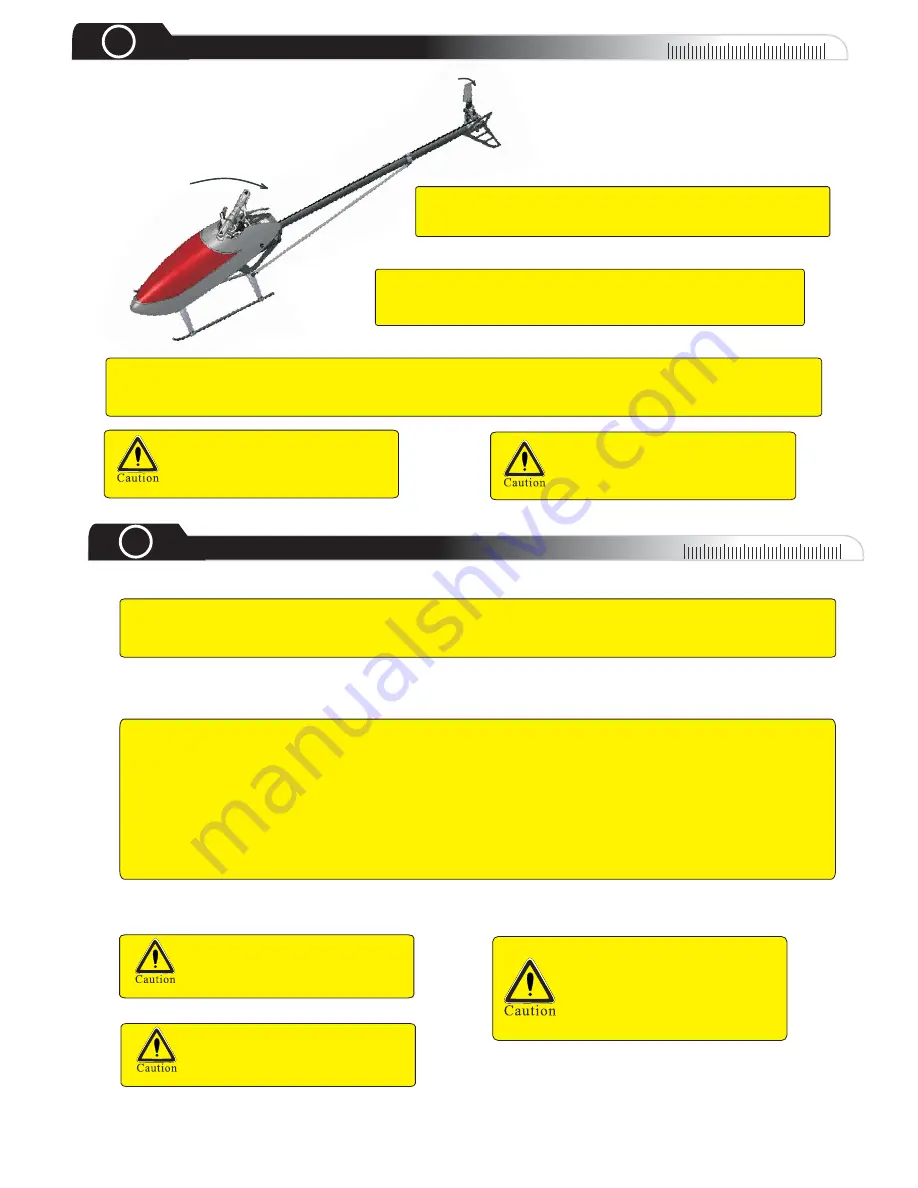
00
10
20
30
40
00
11
Rotor Direction & Blades
When the main rotor spins clockwise the tail blades should
turn clockwise as well watching the tail rotor from the tail fin
side. If not, the belt is twisted and has to be corrected.
Be sure that the main rotor and tail rotor blades are installed in
the right direction. The leading edge has to show into the rotor
directions.
Do not overtighten the blades. The main rotor blades should not be able to retract when you hold the
helicopter sideways with the mainshaft and both blades horizontally. Do not thighten the blades much
stronger than this and use the washers delivered with the blades.
00
10
20
30
40
00
12
Blade Tracking
The get a helicopter without vibration issues and, perfect flight abilities and low power consumption, you
have to track the main rotor blades. The first step is to have identical lengths from the end of the ball link
on the plastic drive tube to the metal arm.
In most cases, the blade tracking will be fine after doing this. To check it during the flight, get the help of
an other pilot for safety reasons. Get in a hover and ask him to watch the rotor disk. Both blades must be
in one line. If there are two disks or the blades appear thicker than they are, you have to readjust the
blade tracking by turning in and out the ball links in the plastic drive tubes. Mark one blade or blade grip
and turn in or turn out the ball link of this blade by one turn. Remember the direction. Hover the
helicopter again, if it gets worse, turn back the ball link and rotate it one turn in. If it get´s better but is not
perfect, turn the ball link of the other blade out by one turn and hover again. The blade tracking should
be perfect now. If not, an issue with the rotor blades is likely. Do not fly with these blades. Also check all
linkages, balls, ball links and the swashplate links for clearance.
Do not check the blade tracking
on the ground alone or with
negative pitch.
Do not fix the helicopter to the
ground or any object.
Keep some distance to the
model and do not test this
indoors!
Do not grind the blades if they
don´t fit. Ask the manufacturer
for other washers.
Use the same amount of washers
with the same thickness over
and under the blades!
Read the following pages before
you go to test this!


































